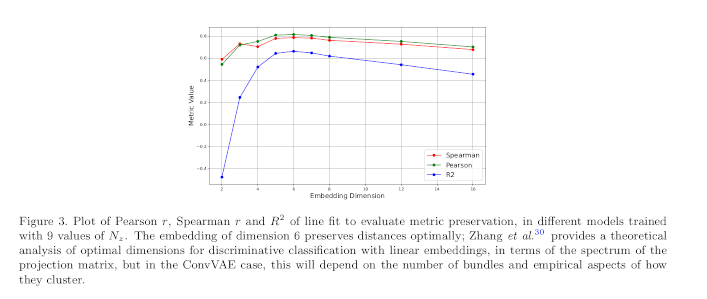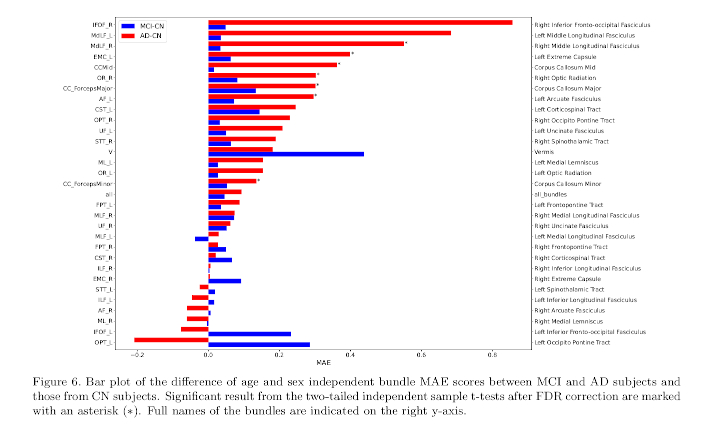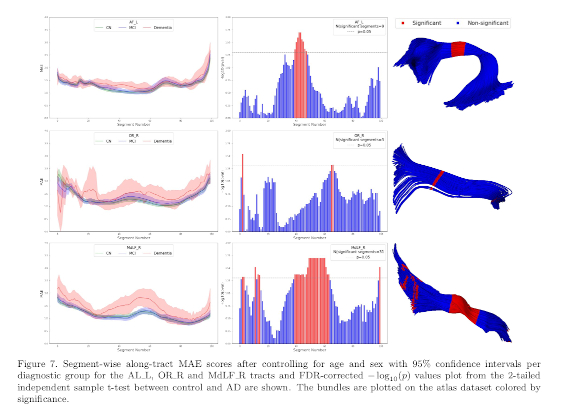Learning Optimal White Matter Tract Representations from Tractography using a Deep Generative Model for Population Analyses
Highlights
- Propose a VAE for to predict WM structural anomalies in tractography.
Introduction
Authors propose to use a convolutional VAE for anomaly detection between normal control and cognitively impaired subjects using tractography data.
Methods
They use a convolutional VAE as their DL model:
- Their streamlines are resampled to 256.
- They use batch normalization and average pooling layers.
- Gradient clipping is used to prevent exploding gradients.
Architecture

They investigate the effect of the latent space dimensionality in preserving the streamline space distance:
- Streamline-wise distance: Minimum Direct Flip (MDF) distance in streamline space vs. Euclidean distance in latent space.
- Centroid-wise distance: same as streamline-wise distance.
- Bundle-wise distance: bundle-based Minimum Distance (BMD) distance in bundle-space vs. Wasserstein distance in latent space.
The Spearman and Pearson correlation, and the coefficient of determination values are computed to determine the optimal dimension.

Data
- ADNI dataset: 141 participants: 10 with Alzheimer’s Disease (AD), 22 mild cognitive impairment (MCI); 87 cognitively normal controls (CN).
- Used multi-shell data.
- Registered all subjects to MNI space.
- 30 bundles were studied.
- 10 CN subjects are used for training.
Evaluation
Mean absolute error (MAE) between the input and the reconstructed features.
Results
Anomaly detection across bundles

Anomaly detection along bundles (tractometry)

Conclusions
Authors identified 6 bundles with statistically significant group differences and specific locations along the length of the tracts with anomalies after controlling for age and sex effect.